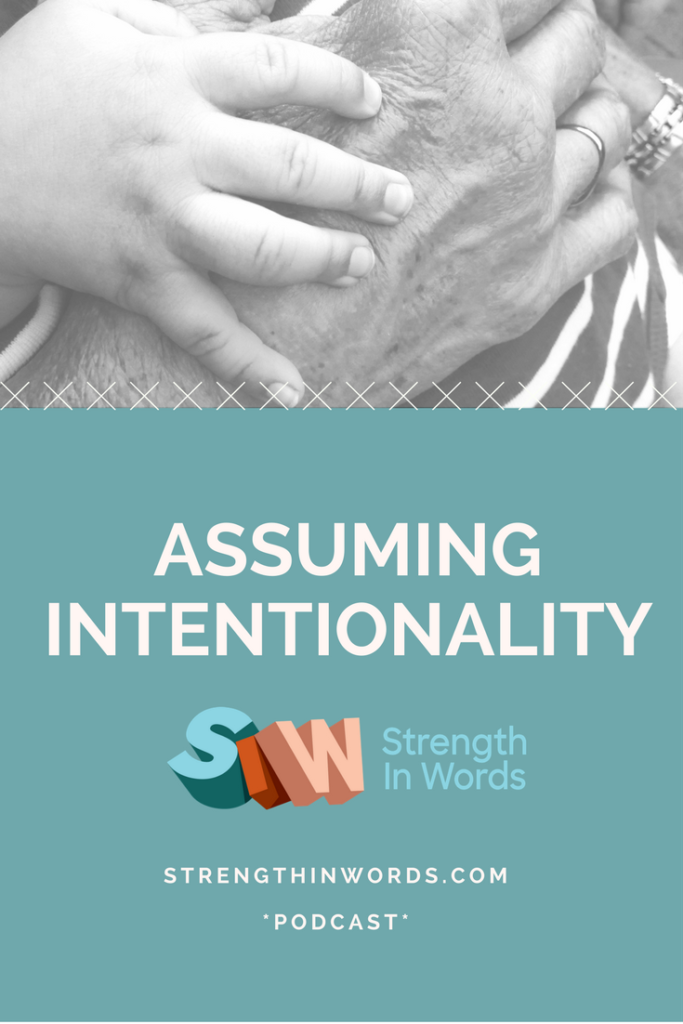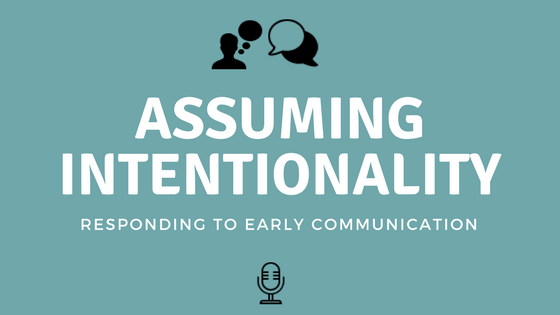We are all communicators. Sometimes it takes a little more attention to see it!

In this episode of Learn With Less, Ayelet discusses the importance of adult responsiveness to infant and toddler attempts at communication.
So much of our response shapes and informs our childrens’ communication with the world – the more we can reach into their world and pull out what we can, the more we shape their ability to be heard, their confidence in expressing themselves, and their desire to connect.
Below is the transcript of this episode’s “Developmental Thought,” an excerpt from the full episode.
For additional information, music, play ideas and the complete interactive family experience, please listen to the entire episode.
>>Don’t Miss Our Corresponding Blog Post!<<
All Behavior is Communication
When we talk about what we see our young children doing, we call attention to the fact that every behavior is inherently communicative in some way. If you say, “oh, I see you batting at the picture of the bear on the mat – are you interested in him? Look at his big ears!” – you read into what your child is doing, and create a sort of social narrative behind it.
As time goes on, your baby trusts that you’re paying attention, and that you’re making a good effort to read his actions and communication attempts! Even when we think we’re paying close attention, I can say with certainty and with experience that we often miss so much of what our children are learning!
Infants and Toddlers are Learners
Young children are learners: that’s what they do! We’ve talked a lot about the fact that their studying of an object, their movement in a particular way, their vocalization or gaze in a particular direction – this is what learning looks like. When we sit back, comment on what they’re doing, respond to their needs and desires, and give them physical and emotional support without bombarding them, both parties often feel more satisfied!
I want to talk for a moment about a term, “communicative intent.” As humans, we are all communicators – whether we are able to speak or not. When your young infant studies the bear on his play mat, and then looks up at you, is he not looking for a response with his gaze? It is our job to decide whether that gaze intended to tell us something specific – whether there was a specific message associated with it, and what that might be.
My general practice, both in my work as a speech-language pathologist and as a mother of a young child, is that it is almost always safe to assume intentionality.
Honoring With a Response
Developmental research confirms that there is a relationship between the responsiveness of parents and caregivers of pre-verbal children (those with and without develop.mental delays) and acquisition of language. I
n other words, when we respond to our young children’s non-verbal communicative efforts (their gestures, their gaze, their vocalizations and even those we associate with negative behaviors such as grabbing or pulling), we honor that this is an effort to communicate, and our response to their communicated message has a positive effect on their growing ability to express themselves through language.
Decoding Their Messages
Of course, once they start to use language, the importance of our responsiveness doesn’t change! I want to tell you about an experience I had with my own son when he was about 15 months old. He was using “one-word sentences” at that time, which, of course, continued to require a fair amount of decoding on my end.
My mother, he and I had gone out to lunch at a restaurant, and as we were waiting for our food, he suddenly stated, “hat!” Of course, my mom and I started trying to figure out what he wanted to say about a hat… neither of us were wearing hats, nobody in the restaurant within his view was wearing a hat… was he asking me to put my hat back on? I did, but that didn’t seem to satisfy him. Did he want me to be silly? I put the napkin on my head and asked him if that was the hat he wanted.
What he did next blew my mind – he pointed to a woman at a table across from us, who was wearing a headscarf, and again, said, “hat!” He was making an observation – and using the closest associative word he knew to describe it, calling our attention to something that was out of the ordinary in his world. We affirmed that yes, it was like a hat, that you could call it a scarf or a headscarf.
My mom was wearing a scarf around her neck, and she offered to put it on his head to try it on. He was thrilled. This was clearly the ultimate goal, “What’s that thing she’s wearing that’s like a hat but not, and how do I get one of those to try on my own head?” He had gotten his message across, and we had successfully decoded the multi-faceted nature of it.
Making Connections For Connection
The point I’m trying to make here is that there is so much our little ones are trying to tell us or ask of us, even when they can’t! Even when we can’t see it.
And it’s often not what we would have expected! The best we can do is think about all the different reasons we communicate… to connect what they express to our own knowledge of their experience and interests, and hope that we don’t miss too much!
References:
Bates, E. (1979). The emergence of symbols: Cognition and communication in infancy. New York: Academic Press.
Wetherby, A., Cain, D., Yonclas, D., & Walker, V. (1988). Analysis of intentional communication of normal children from the prelinguistic to the multiword stage. Journal of Speech and Hearing Research, 31, 240-252.
Yoder, P.J. & Warren, S.F. (1999). Maternal Responsivity Mediates the Relationship Between Prelinguistic Intentional Communication and Later Language. Journal of Early Intervention, 1999. 22:126-136. http://vkc.mc.vanderbilt.edu/yoder/pdfs/yoder-p-j–warren-s-f-1999.pdf

